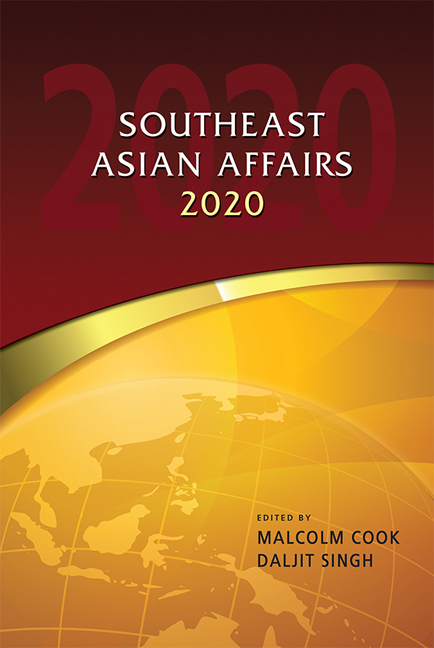American Foreign Policy and Southeast Asia
Published online by Cambridge University Press: 24 November 2020
Summary
The decline of America's relative strategic and economic power is reflected in adjustments to its global policy and strategy. This has in fact been apparent since the Obama administration's unwillingness to become involved in the Syrian conflict, and its calls for “burden sharing” and more partnerships. The tendency towards retrenchment has continued under the Trump administration, with officials seeking to review foreign involvement with the question “What is in it for us?” and seeking ways out of the conflicts in the Middle East and Afghanistan as the country tries to focus on the Indo-Pacific region.
American primacy after World War II was a historical anomaly brought about by very special circumstances of the post-war world. For many years before World War II the United States relied on a balance-of-power strategy to secure its interests in Asia, often in a multipolar geopolitical setting. This is the likely direction for the future. It is not clear yet what form a balance-of-power strategy will take in the Indo-Pacific. Alliances, partnerships and “burden sharing” will be important elements.
This chapter first addresses the big change in US foreign policy—in particular, policy towards China—during the Trump administration. It describes the mood in US policy circles as well as in the wider foreign policy community towards China and President Trump's role, which is not always in tandem with that of the relevant bureaucracies and Congress. It then goes on to examine the policy towards Southeast Asia, the region's importance to US interests, the current US “influence deficiency” in Southeast Asia and the prospects of the United States augmenting its influence and standing. Finally, there is a section making some concluding observations.
The New Turn in US Foreign Policy
A new phase in US foreign policy has begun, propelled mainly by three factors. First, the hubris and overreach during the immediate post–Cold War period, correctly seen in hindsight as a “unipolar moment”, led to wasteful and costly wars in the Middle East. Second, domestic policy failures to cope with the negative effects of globalization resulted in significant damage to US manufacturing industries and sections of the white working class. The global financial crisis of 2008–9 only accentuated the economic distress.
- Type
- Chapter
- Information
- Southeast Asian Affairs 2020 , pp. 57 - 76Publisher: ISEAS–Yusof Ishak InstitutePrint publication year: 2020



